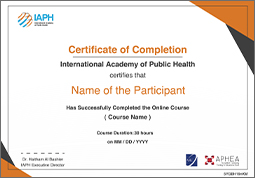Women and child health in humanitarian setting
Description
In the past, reproductive health (RH) was a sector that was rarely addressed during emergencies. As the trend has become for emergencies to evolve and become more protracted, it has become even more important to develop programming related to reproductive health.
Many aspects of reproductive health in emergencies remain the same as those in non-emergency settings, however, other aspects must be considered such as trauma, family separation, poverty, and social instability that may affect their needs and risks. This course focuses on the priority reproductive health needs of the population and describes a logical approach to establishing reproductive health services in emergency situations.
Learning Outcomes
- Discuss the leading causes of morbidity and mortality among women in emergency situations
- Assess reproductive health needs and plan the reproductive health services in emergency situations
- Implement the Minimum Initial Services Package (MISP) and more long-term reproductive health care services for populations
- Monitor and evaluate reproductive health services
- Reproductive Health in Emergency.
- Minimum Initial Service Package (MISP).
- Reproductive Health Programming in Emergency.
- Coordination of Sexual and Reproductive Health Services During Crises.
- Gender-Based Violence (GBV).
- Child Protection in Emergencies.
- Social Mobilization for Vaccine Campaigns.
- Vaccine Prioritization and Mass Vaccines.
- Management of Vaccines During Emergencies.

Duration:
30 Learning Hours
Accredited By:


Certificate

Are you interested in the course?
Get notified once the course is open by clicking on
Women and child health in humanitarian setting
Thank you for registering your interest! We appreciate your enthusiasm for this course. As soon as it becomes available, we will reach out to you with all the details. Stay tuned!